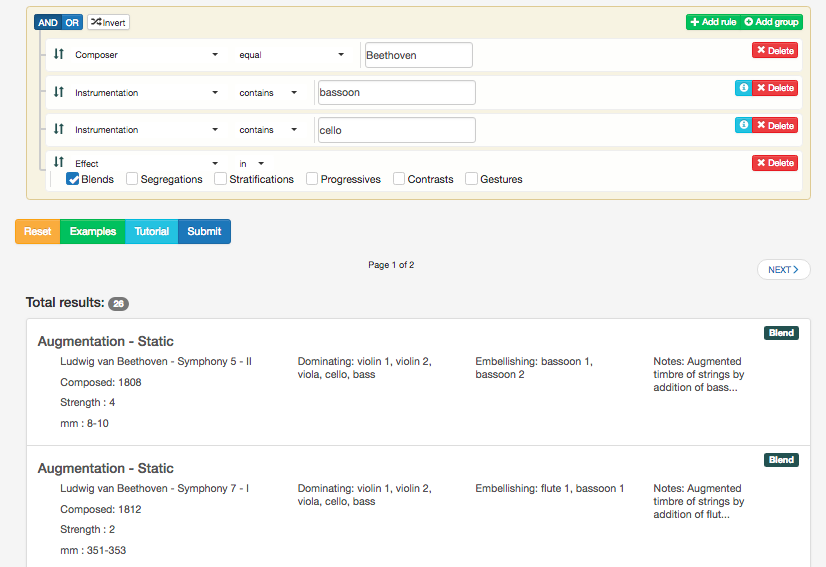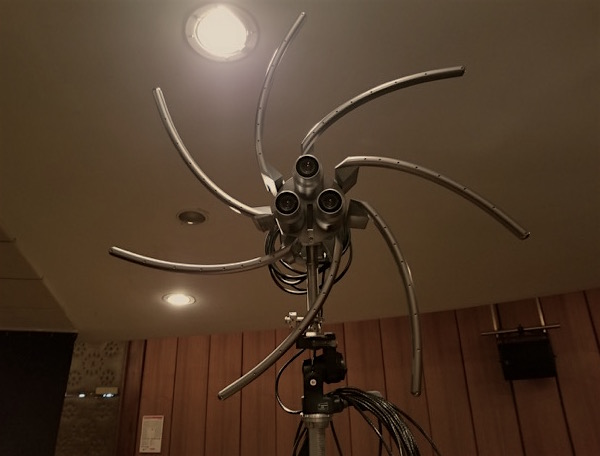Renowned for his research in auditory perception and cognition, Prof. Stephen McAdams is a Canada Research Chair and was also a Killam Research Fellow from 2016-2018. He leads a dynamic group of interdisciplinary students in the Music Perception and Cognition Lab (MPCL) and continues to publish articles and book chapters, and present his findings around the world. Last year he directed Timbre is a Many-Splendored Thing – a conference held at the Schulich School of Music that brought together major timbre and orchestration researchers from around the world.
Just a quick scan of the MPCL’s list of recent publications suggests both the feverish speed and the high quality of research coming out of the lab: journal articles from recent years can be found in publications as wide-ranging as Music Perception, the Journal of New Music Research, Psychology of Music, and Experimental Brain Research. Prof. McAdams has also made a number of contributions to books on the subject, including recent chapters in Foundations in Music Psychology, The Oxford Handbook of Timbre, and the Routledge Companion to Music Cognition. You can cast your eye over the full list on the MPCL website.
Arguably McAdams’ most ambitious project to date is the ACTOR Project, which was awarded a seven-year SSHRC Partnership Grant last year worth $2.5 million. ACTOR stands for the Analysis, Creation, and Teaching of Orchestration (only one of many acronyms at play in the project). The project aims to develop a perceptually-based theory of orchestration practice and develop new tools for thought and practice for analysts, composers, teachers, and the music-loving public. It involves a diverse and very international team of composers, music theorists, musicologists, computer scientists, psychologists, signal processing scientists, sound recordists, and conductors. They recently launched their new website, where they will be documenting their output over the seven-year grant and beyond.
Drawing from a large pool of colleagues in the field, McAdams signed on over 70 research collaborators to work on the ACTOR Project, from an impressive 21 different academic and private-sector institutions, in five different countries. An earlier grant project involving the Haute École de Musique de Genève, IRCAM-Centre Pompidou in Paris, and McGill University built the initial foundation for this larger ACTOR Project, which has expanded outwards since then in every research direction imaginable.
This photo was taken during the ACTOR "kick-off" meeting held here in Montreal last July, with a representative from each institution sent to participate in two days of planning and collaboration:

When asked about managing this number of collaborators, McAdams said that one of the first major decisions achieved by the full ACTOR cohort in their "kick-off" meeting was agreeing on an official definition of orchestration, which McAdams can chant by heart to anyone who asks: The choice, combination, and juxtaposition of sounds to achieve a musical goal. He says that “every discipline has its own jargon, for example, dynamics in physical sciences means time-varying, but in music it means the change in volume...with so many disciplines involved, we really have to work on terminology and teaching each other our vocabularies.”
The ACTOR Project is divided into three major research axes:
1. Analysis
2. Tool Development
3. Output Innovation
Essentially this means that the project has specialists who analyze music, writings on the subject, audio, listeners' perceptions, and performances; specialists who are busy developing a number of computer-based tools related to orchestration; and people who take what is learned from all of that and inject it into teaching and creation, as well as academic work.
The ultimate goal being of course that once the seven years of the ACTOR Project is complete, there will be a wide range of people benefitting from the research and development of new technologies: performers, composers, orchestrators, theorists, computer scientists, recording engineers, children attending educational orchestra concerts, teachers, and general music audiences will all share in the fruits of this mammoth undertaking.
When asked how one goes about analyzing orchestration, McAdams says that “people don't just look at pages with symbols on them, they also have to listen to recordings so that analysis of orchestration is informed by how it is performed.” Current perceptual testing is being carried out to learn more about how people hear instruments blending together, what they hear separately, and how space affects listeners’ perception: “we can use 256-track sound files made up of every instrument, and selectively listen to each instrument alone or in combination with other instruments in the score…” says McAdams of the perceptual testing process.
ACTOR Project: Five Features
It would take a much longer article to describe every ongoing project, output, and sharp mind of the ACTOR Project. This section will give you some insight into just five of the ACTOR sub-projects, to paint a picture of ACTOR's scope. Even in these five examples it is clear to see just how this research directly applies to people across a number of disciplines. The project's new website has more information on the many other projects.
1. Orchard (Orchestration Analysis and Research Database)

This database was designed and built during a previous grant project led by McAdams, and includes many scores that have been analyzed and annotated according to how orchestration effects are used – there are currently over 4000 annotations loaded into the system. Users can search for a particular composer or work, search for a specific blend of instruments, or search using a specific glossary of perceptual effects of orchestration. To use a very basic example, a composer wanting to see examples of how Beethoven used the bassoon and cello together in a melody could search for exactly that, and find score examples next to excerpts of a recording (cued to play the exact phrase where a particular orchestration technique happens) to listen to at the same time.

During the course of the ACTOR Project it will be expanded to incorporate all of the new work happening in the first Analysis axis. It will also eventually be made open-access for the public to search and experiment with. Writings and interviews about orchestration will be added, along with recordings from which users will be able to extract each orchestral instrument. This is a database to watch out for in the coming years as it continues to develop.
2. OrchPlay
This software is "the first multi-channel audio player for orchestral music," and is another tool that has been in development for a number of years already, with ACTOR boosting the continuation of its expansion. In OrchPlay you can listen to orchestral music with the score, but also choose a single instrument of the orchestra to listen to in isolation. For example, if you wanted to listen to the opening of Beethoven’s Fifth Symphony, but only hear what the second clarinet and violas play, you could isolate just that. This software is already being used in Prof. Denys Bouliane's orchestration classes here at the Schulich School of Music, and for perceptual testing being carried out by student researchers in McAdams’ lab. It is downloadable from the OrchPlay website. OrchPlayMusic is one of the ACTOR Project's private-sector partners, whose General Director is Denys Bouliane, Associate Professor of Composition at the Schulich School of Music.
This short video shows you how the software works:
3. Composer-Performer Research Ensembles
One of the major new initiatives for the ACTOR Project will be a number of Composer-Performer Research Ensembles, which will form new graduate seminars at five partner institutions: McGill University, Université de Montréal, the University of British Columbia the University of California at San Diego, and the University of Toronto.
The premise is exactly what the name suggests: composers and performers will work together, to create music for a particular combination of performers (smaller ensembles), listening and adjusting, solving problems, and reflecting on the effectiveness of orchestration decisions. Scores and video recordings of these sessions will then be analyzed further, documenting the creative process. Students from the performance, composition, and sound recording departments have this to look forward to here at Schulich.
4. Innovation for Education
The ACTOR Project has both the Orchestre symphonique de Montréal and the Orchestre Métropolitain as partners. These organizations are busy finding new ways to teach children about orchestral music, and re-thinking how the “educational” orchestra show has traditionally been presented. Children in the coming years will have many exciting ways of being drawn into the magic of the orchestra, including app-based games and “augmented reality” apps created by Sonic Solveig, where you might hold a tablet up to a poster of an orchestra, and click on an instrument to hear it play.
Sonic Solveig is another partner institution, based in France. They specialize in “edutainment” apps, where music is brought to life in on smart phones and tablets through stories and games. With their partner company, Les clés de l'écoute, they also combine live orchestral performance and digital technology – this is a video from their website of The Real Story of the Nutcracker:”
5. ODESSA
ODESSA stands for Orchestral Distribution Effects in Sound, Space, and Acoustics, and is a collaborative project between the Université de Montréal, McGill University and Detmold University of Music in Germany. The aim of this ACTOR sub-project is to study orchestral blending effects: how they are sculpted by the conductor and musicians, and how instrumental sound might change when recorded from different perspectives.
Last September, the researchers assembled at Salle Claude-Champagne with the Orchestre de l’Université de Montréal under the direction of conductor Jean-Francois Rivest and Tonmeister Prof. Martha de Francisco, with a team of students from Detmold and Montreal. They did a recording with 50 microphones of an excerpt from Tchaikovsky’s Sixth Symphony, where different combinations of instruments were recorded playing together. The ACTOR researchers, including Prof. Malte Kob from Detmold, experimented with timbral blending using a combination of close microphone pick-up and ambient recording. The recordings have since been edited by Prof. de Francisco and Maestro Rivest at CIRMMT's critical listening room, and will be used for acoustic analyses, perceptual experiments, and as pedagogical materials for courses in sound recording.
This is the acoustic camera that was used to investigate the acoustic interaction between the concert hall and the orchestra during the recording:

There are more photos of the equipment used during the ODESSA recording session on the ACTOR website.
Find out more about the people and projects that are associated with the ACTOR Project on their new website: www.actorproject.org


